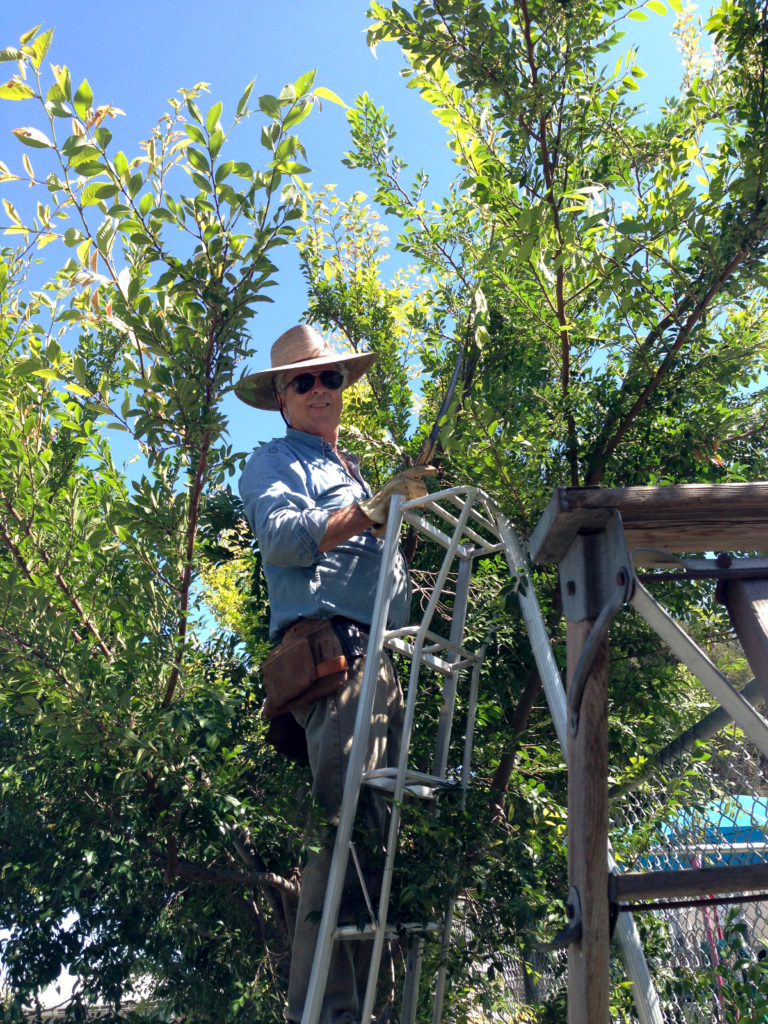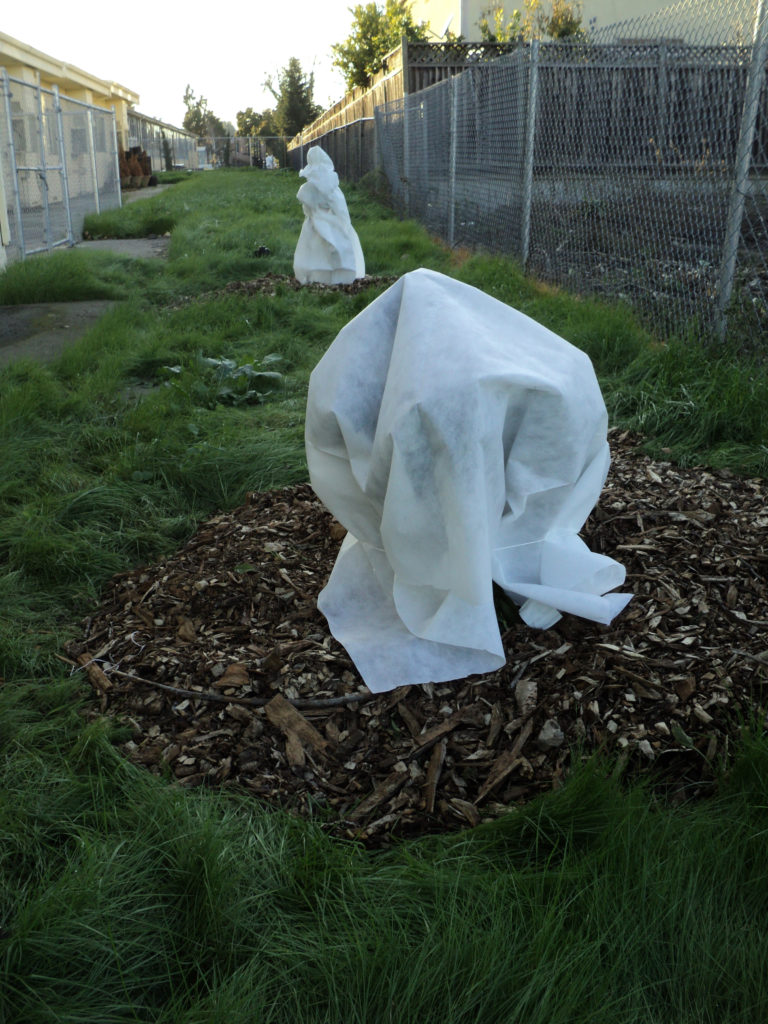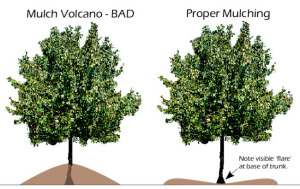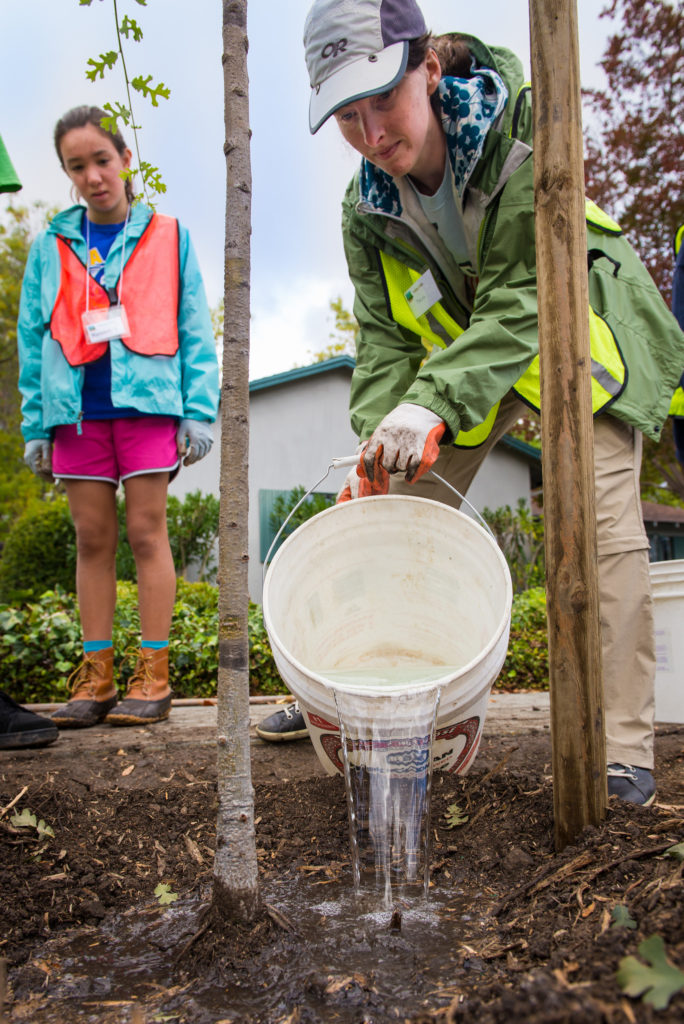- About Us
- Our Work
- Tree Info
- Get Involved
- Blog
- Volunteer
- Support Us
By Canopy Team on January 8, 2018

This winter, don’t forget to care for your tree! Even though it is cold and wet, this is the perfect time to take advantage of caring for your tree while in dormancy. Following are four essential tree care tips for the winter time.

Trees go into dormancy during winter making it the ideal time for you to prune. We recommend pruning trees while they are young to establish good structure and to prevent damage in the future, such as limb failure.
Here are Canopy’s five steps to pruning young trees:
Read more from our Pruning Young Trees page and check out the “structural pruning for home gardeners” video by certified arborists, Larry Costello and Ellyn Shea.
If you do not feel comfortable pruning or do not have the proper tools, hire a professional arborist to take care of your pruning, especially if you have a mature tree. Visit our Arborist List to find a certified arborist near you.

Be prepared to provide protection for your most vulnerable trees when temperatures drop to freezing. Young trees and certain tropical/subtropical species cannot tolerate freezing temperatures below 32 degrees.
To protect your trees from freeze:
Continue reading over at our Protecting Trees from Freeze page for advanced planning tips and what to do to help your tree recover.

Cover the soil with a 3- to 5-inch layer of mulch starting a few inches from the base of the trunk and extending 2 or more feet from the tree in all directions (creating a circle around the tree).


Continue to keep your tree watered when there is no rain during the winter months:
For trees that are 3 years or younger, continue to water your tree even when there is rain:
Check out our Tree Watering Guidelines to determine the specific watering needs of your tree.
Do you have a question about winter tree care? Email your question to [email protected] or visit the Arborist List to hire a local certified arborist.